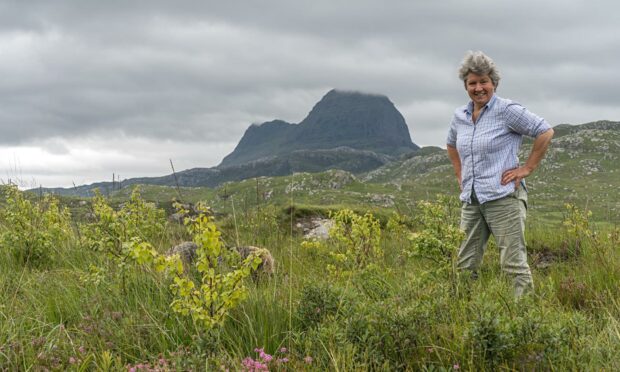Conservation charities have announced a new 30 year partnership to help breathe new life into two Highland estates.
Assynt Foundation will work in tandem with Woodland Trust until 2051 to revitalise Glencanisp and Drumrunie Estates in the north-west Highlands.
The partnership aims to create new native woods amongst a wider mosaic of trees, open moorland and mountains.
A joint management board will oversee the work with the chairmanship alternating between the two charities.
Conservationists say the their aim is to increase the productivity of the estates in securing the future of Scotland’s wildlife.
‘We want to do more’
Assynt Foundation chairwoman Claire Belshaw said: “Together we will work to create a diverse and productive landscape of woods, moorland and water.
“This will provide a high-quality backdrop for The Assynt Foundation to realise its rural development ambitions and provide a sustainable source of income.
“This partnership will build on work already done by Assynt Foundation since we purchased the estates in 2005.
“A reduction in deer numbers has already resulted in natural regeneration of some of our native woods and the flowering of dry and wet heaths. We want to do more, and we are thrilled to be working with Woodland Trust Scotland for the next 30 years to see new woods planted.”
She added: “These woods will provide shelter for red deer, livestock and lots of wildlife within and around the edges. People can continue to enjoy and benefit from this landscape by working in it and walking through it.”
The Assynt Foundation was established in advance of the landmark community land buy-out of the Glencanisp and Drumrunie estates in 2005, under provisions of The Scottish Land Reform Act (2003).
The 44,400 acres includes the mountains of Suilven, Canisp, Cul Mor and Cul Beag set amongst a vast patchwork of rivers and lochans.
30 year endeavor
Over the next three decades, charity officials will see the improvement of open ground habitat, peatlands and riparian areas.
Existing ancient woodlands including remnants of Scotland’s rainforest will also be restored and expanded over the course of the project.
A Land Management Plan will be reviewed every five years with local consultations being help to garner public support.
The woodland creation and environmental projects will be funded by the Forestry Grant Scheme and carbon revenue.
Peter Lowe of Woodland Trust Scotland said they are committed to working with the local community to bring about change.
“We are very conscious that initiatives such as this can become festooned with words that imply going back to some past state – re-storing, re-vitalising, or re-wilding – but we are looking forward,” he said.
“We are progressing to a landscape that is simply more productive across the board. It will deliver for nature and for people.
“This is an exciting opportunity to show how we can work with local communities to bring about landscape scale change. The aims of nature conservation and economic wellbeing should not be at odds.”

